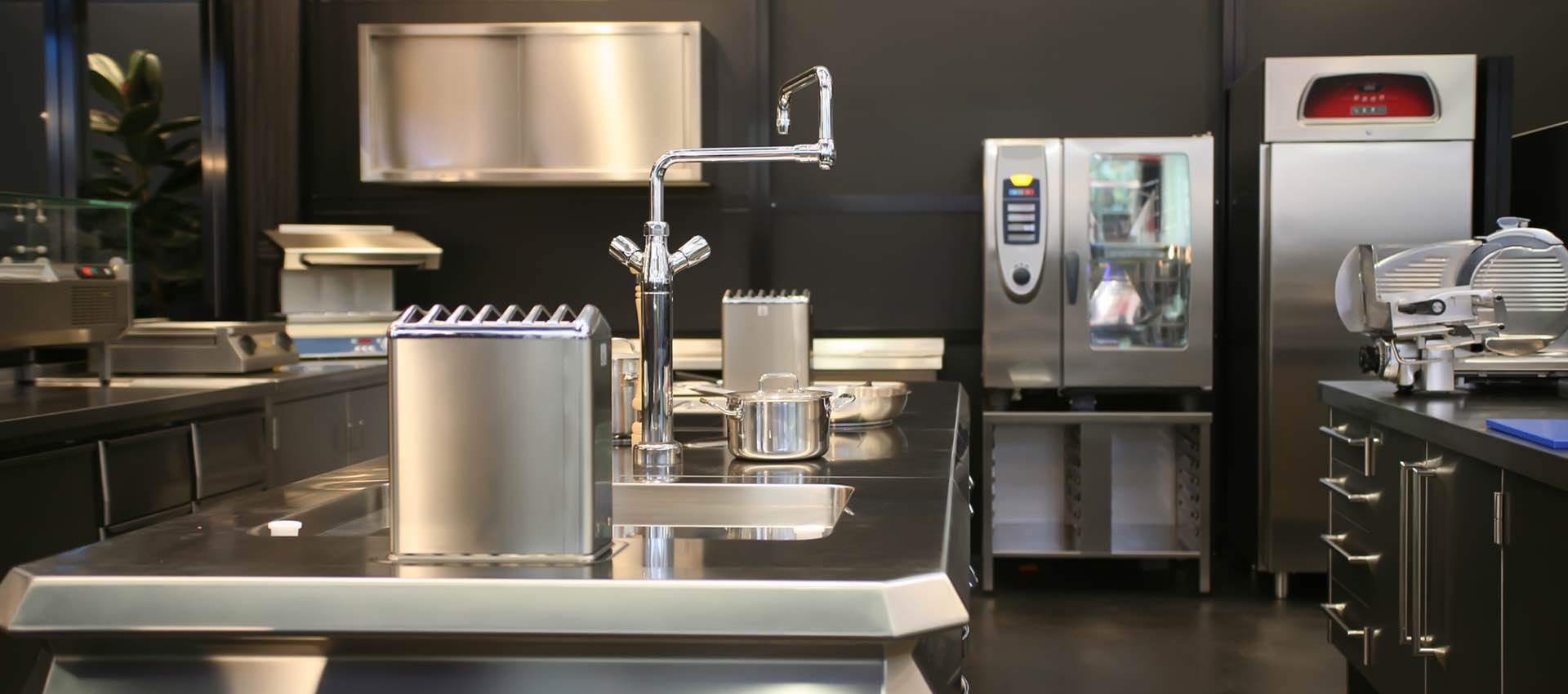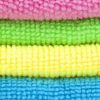Stainless steel appliances and surfaces are wonderful commodities to have in any kitchen. The material is durable, long-lasting, easy to clean and nice to look at!
It is, however, pricier than some other types of finishes. Because of this, it is very important to take proper care of your stainless steel in order to get your money’s worth and keep your appliances operating for a long time.
Restoring stainless steel can be a pain, so it’s very important to keep up with your nightly cleaning to avoid having to do deeper cleans later.
It is important to remember that there are different “series” of stainless steel. That means that because the composition of the steel is different, the very, very thin film on the steel is different and has to be treated appropriately.
Make sure you know what type of series your different stainless steel appliances and workspaces are before cleaning, just to be safe.
What to use
When doing your nightly cleanings, make sure to always use light, gentle cleansing products and tools, not harsh chemicals or brushes. Stainless steel scratches more than other metals, so use gentle materials when repeatedly cleaning the surface in order to be non-corrosive.
Cleaners: Use cleaners that have alkaline, alkaline chlorinated, or non-chloride chemicals. Vinegar is a great option if you need a harder clean, but don’t use it every night.
Brushes: Use only soft cloths or microfiber cloths. Avoid any type of abrasive brush or cloth: this means bristles, scratchy towels, anything that isn’t soft. Again, stainless steel scratches, so make sure to avoid those corrosive cleaning brushes!
How to clean
Unless you have water stains or another type of stain, the nightly wipedown of your stainless steel products won’t take that long, so it’s easy to fit it into your routine. Find a time that works for you.
It is recommended, however, to wipe down your steel near the end of the nightly kitchen cleaning, just in case something spills when you’re cleaning another area and you have to wipe everything down twice.
General Stainless Steel Restoration (All Sinks, Work Tables, Equipment, and Appliances)
If your space was used to prepare a lot of food of is an area that gets lots of waste, like a sink, do a cursory wipe-down with a damp towel to remove the food. Make sure your towel is damp, not soaked: you don’t want water to pool on stainless steel.
Use your gentle cleaners and tools on the full surface of the steel. If you have any stains on the steel, deal with them after this step. You can check out blogpost on how to restore stainless steel here.
On stainless steel, there is a grain that will run along the steel. Make sure to wipe down “going with the grain.”
The optional step after wipedown is to apply a gentle shiner, however that is not necessary each night.
Stainless Steel Flatware
This is an important area to do – you need your silverware! The general consensus when it comes to flatware is just to toss it into the dishwasher (which is fine) but there are a few other steps you should remember as well.
- Pre-soak your flatware by placing the cutlery in a bucket with water and a pre-soaking solution. You only need to let it soak for about 20 minutes. Don’t soak for too long!
- After you soak the flatware, load it into the dishwasher with the handles down and the knives separate. Use only mild dishwashing detergent and none that contain acidic properties, heavy chlorination, or bleach. Those properties can erode the steel.
- Dry your flatware quickly after the wash is finished. Avoid water stains. If you need to tackle any stains on the flatware, this is the time to do it.
Stainless Steel Cookware
The nightly routine for stainless steel cookware (without any restoration) is very simple.
- Rinse all the food out of the cookware.
- Wash cookware in hot soapy water by hand and with plastic, wooden or silicone/rubber utensils to minimize damage to the surface. There is a grain on cookware as well; always scrub in the grain’s direction.
- If you need to do any restoration, now is the time.
- Dry well.
Nightly stainless steel maintenance is fairly straightforward, easy, and simple to do. It prevents build up on your surfaces, which saves time and money in the long term. Good luck with the caring of your steel!




